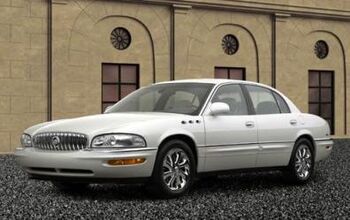24 Views
Piston Slap: Parked in the Polar Vortex?

by
Sajeev Mehta
(IC: employee)
Published: February 8th, 2019
Share
V writes:Here are two questions from a regular, and grateful, Piston Slap reader:
- How long is best to idle a gasoline engine after starting & before driving off: [A] a few minutes? one minute? [C] until the revs settle down? no need, just drive right off? Assume ambient temperature well above freezing; a shifting style on the sedate side; and a car made in the past 15 years so engine has EFI and EGR and all that. Current ride’s engine is naturally-aspirated and direct-injected, but I sure would appreciate knowing the proper protocol for other combinations too, if different. Several sources over the past years have all agreed on for modern engines, but then just a few months back a Car & Driver column said [A], so now I’m unsure again.
- Leaving a car (stick shift *of course*) parked: best in gear, best in neutral, or doesn’t matter? Assume the parking space is either not sloped at all, or is sloped and I know enough to turn a front wheel into the curb toward the down slope.
{
"id": "9011256",
"alt": "",
"title": "",
"video_link": "https://www.youtube.com/embed/0NRqnuMP2Yg",
"youtube_video_id": "0NRqnuMP2Yg"
}
{
"width": 634,
"height": 357,
"showRelated": true
}
Back to manuals, do only park it in first gear: numerically higher gears require more wheel rotations to move the rest of the drivetrain. What’s great for jackrabbit starts is also great for holding the vehicle on not-perfectly flat ground…Send your queries to sajeev@thetruthaboutcars.com. Spare no details and ask for a speedy resolution if you’re in a hurry…but be realistic, and use your make/model specific forums instead of TTAC for more timely advice.[Image: © Timothy Cain/TTAC]
#BlockHeater
#ColdWeatherStartUp
#EngineBlockHeater
#EngineWarmUpInThePolarVortex
#ManualTransmission
#Oil
#ParkInFirstGear
#ParkInGear
#ParkingBrake
#PolarVortex
#WarmUp
#WarmUpProcedure

Sajeev Mehta
More by Sajeev Mehta
Published February 8th, 2019 8:08 AM
Latest Car Reviews
Read moreLatest Product Reviews
Read moreRecent Comments
- Jeff When Chevrolet started offering vehicles with features that were exclusive to Cadillac and Buick and Cadillac cheapened their cars to chase volume that was the beginning of the decline of the Cadillac brand. The same thing holds true for Ford and Lincoln. No compelling reason to buy the luxury brand over the lower tiered brand when the lower tiered brand can be comparably equipped for thousands less.
- Lou_BC On a different note, I read that 30% of the world's energy is now generated by "renewable" sources.
- Kjhkjlhkjhkljh kljhjkhjklhkjh not surprised their grid is as terrible as ours ...
- Lou_BC EV's are a convenient foil. Cadillac has been searching for its place. Are are they luxury performance? In your face audacious? Do they offer prestige? What sets them apart from the rest of "the look at me I'm special" vehicle market? I can buy a Denali SUV or pickup with similar luxury.
- Cprescott No big loss. It was always third rate when there was competition. At best its only good point was its price point.


































Comments
Join the conversation
I wish more cars had an oil temperature gauge. My Chrysler 300 has a digital oil temperature gauge, besides a digital engine coolant and digital transmission temperature gauge. Here in Canada in winters that is a very useful indicator as to whether the engine has reached it's normal operating temperature. I normally wait for engine rpms to drop below 1000 on a cold start up before driving off slowly. Keep the rpms and engine load low. And even if my trip is short, I try and get the engine oil to get up to it's normal operating temperature which is at least 75 Celsius to 80 Celsius.
I start the car, wait a few seconds before putting the engine into gear, and then let it warm up by driving slowly/low RPM with very little load on the engine while driving on the residential streets in my neighborhood. No fuel wasted sitting idling as the engine warms up and 10 mph reduces trip time as compared to 0 mph. By the time I get to the main side streets, the coolant temperature is warm enough to heat the car and I drive with moderate acceleration.